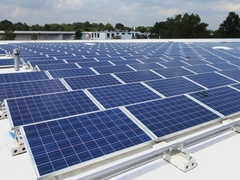
Yet, the market tells a different a story. Prices have fallen and the cost per watt for residential buildings has fallen from $9 per unit in 2006 to the current $5.46. The average commercial industrial installation price is even lower at $3.45 per watt. In some regions, payback for upfront investment is four to five years and lease schemes are widely available.
The media is always reporting on some revealing stories about solar power, such as this article about New York being the next great solar market, with focus on one particular company called OnForce Solar, based in the Bronx.
Back in May, OnForce’s CEO Charles Feit was named one of Crain’s New York Business’ “Top Entrepreneurs of 2012”. Among the criteria for selection was creativity and innovation. “OnForce has demonstrated these qualities consistently during the past five years, even during difficult market conditions,” Elaine Pofeldt, a contributing editor at Crain’s, said at the time. “It’s been a challenging period in the solar energy field, and under Feit’s leadership, OnForce has thrived nonetheless.”
The Solar Energy Industry Association says that over the last year around 52,000 residential rooftop systems were installed in the U.S. last year, 30 percent more than the previous year. Between 2010 and 2011, there was a growth of 109 percent for rooftop installations, including commercial buildings.
Great ideas abound. For example, the city of Brea in California turned to a type of financing that has become popular amongt government agencies. It is an energy-savings performance contract that requires no upfront costs and allows the city to pay for the project over time using the savings on utility bills. Called Pay-if-You-Save, it offers an attractive, imaginative solution. Brea installed high-efficiency lighting systems in 14 city buildings and 4,000 street lamps, updating heating and cooling systems at six buildings and installed 1.8 megawatts of solar panels at three sites.
The solar power revolution is taking place, thanks to the industry’s ingenuity, creativity and public support. Now we need politicians and government to get more seriously on board.
(Via Business Week), Solar Done Right and SEIA





